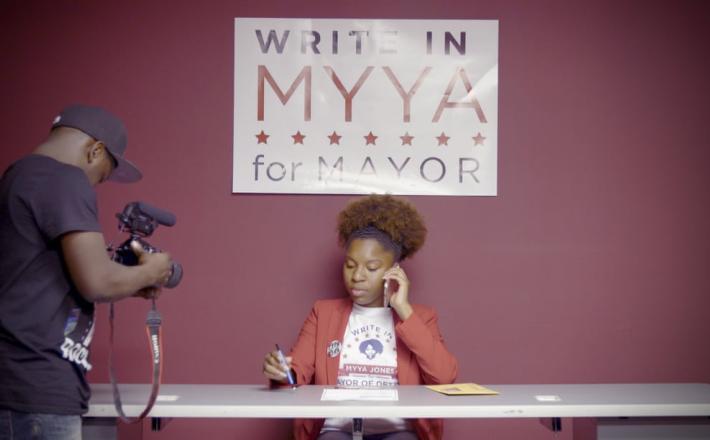Represent: inside a timely film about the tough road women in politics face
Source: The Guardian
The decision to run for office arrived for Myya Jones in the winter of 2016. She was 22, a campus leader for the Black Student Union at Michigan State University, and determined to change her home town of Detroit for the better. For months, she researched the process of gentrification, which pushed black people out of the neighborhoods where she grew up and went to high school; for months, she waited for a name to support. Eventually, she thought, “You know what? I’m going to run for office myself because everybody else is scared,” she told the Guardian.
For Julie Cho, a 47-year-old married mother of two living in suburban Evanston, Illinois, a majority Democratic district, the decision was fueled by frustration with her state house speaker and the Republican party’s lackluster efforts to campaign in her district. “If no one’s going to do it, then I’m going to do it,” she told the Guardian of her decision to run for state representative. In rural Granville, Ohio, 33-year-old Bryn Bird had long wondered: “If you weren’t afraid, what’s the one thing you would do?” The answer was run for county trustee, but it never seemed like the right time until 2017, when her mother’s cancer turned terminal. “I wanted her to see me run for office,” she told the Guardian. “I wasn’t afraid of anything any more.”
Represent, a documentary on the tedium of running for local office as a woman in Trump-era America, follows the three women as they launch their nascent political careers in the midwest. The film begins with a clear invocation to opportunities won and lost: in 1974, second-wave feminist activism and the movement to adopt the Equal Rights Amendment launched the so-called Year of the Woman, in which an unprecedented number of women were elected for national office. Forty-four years later, enough had not changed – women still comprised only one in five congressional seats – for another round of “year of the woman” sloganeering. The midterms of 2018 were, indeed, a banner year for women on the national level: 476 House candidates and 53 Senate candidates, more than double the number of women who ran in 2016, largely Democrats spurred to action by the election of a president who once bragged that men should “grab ’em by the pussy”.
Click here to read the full article published by The Guardian on 13 August 2020.

The decision to run for office arrived for Myya Jones in the winter of 2016. She was 22, a campus leader for the Black Student Union at Michigan State University, and determined to change her home town of Detroit for the better. For months, she researched the process of gentrification, which pushed black people out of the neighborhoods where she grew up and went to high school; for months, she waited for a name to support. Eventually, she thought, “You know what? I’m going to run for office myself because everybody else is scared,” she told the Guardian.
For Julie Cho, a 47-year-old married mother of two living in suburban Evanston, Illinois, a majority Democratic district, the decision was fueled by frustration with her state house speaker and the Republican party’s lackluster efforts to campaign in her district. “If no one’s going to do it, then I’m going to do it,” she told the Guardian of her decision to run for state representative. In rural Granville, Ohio, 33-year-old Bryn Bird had long wondered: “If you weren’t afraid, what’s the one thing you would do?” The answer was run for county trustee, but it never seemed like the right time until 2017, when her mother’s cancer turned terminal. “I wanted her to see me run for office,” she told the Guardian. “I wasn’t afraid of anything any more.”
Represent, a documentary on the tedium of running for local office as a woman in Trump-era America, follows the three women as they launch their nascent political careers in the midwest. The film begins with a clear invocation to opportunities won and lost: in 1974, second-wave feminist activism and the movement to adopt the Equal Rights Amendment launched the so-called Year of the Woman, in which an unprecedented number of women were elected for national office. Forty-four years later, enough had not changed – women still comprised only one in five congressional seats – for another round of “year of the woman” sloganeering. The midterms of 2018 were, indeed, a banner year for women on the national level: 476 House candidates and 53 Senate candidates, more than double the number of women who ran in 2016, largely Democrats spurred to action by the election of a president who once bragged that men should “grab ’em by the pussy”.
Click here to read the full article published by The Guardian on 13 August 2020.